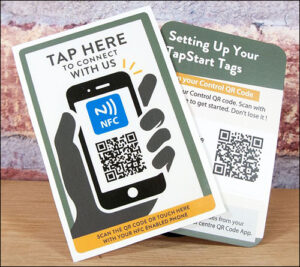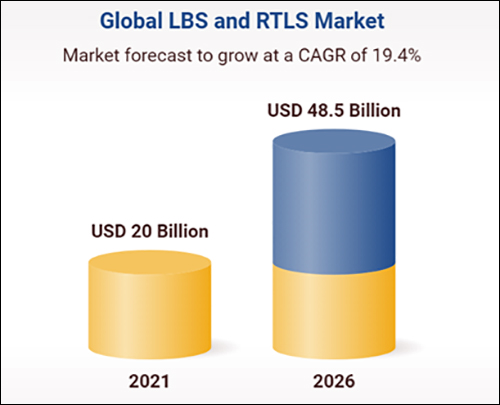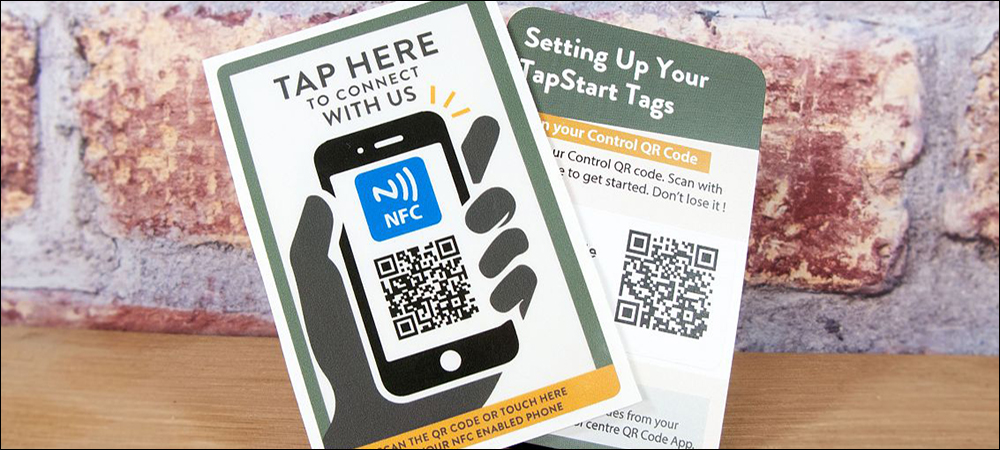Presented here are recent news announcements regarding the following organizations: Sasktel, Eleven-X, Seritag, Pozyx and ResearchAndMarkets.
Sasktel, Eleven-X Extend Smart-City Initiative Partnership
Eleven-x, a supplier of wireless smart-city solutions, has announced that it is extending its partnership with telecommunications company SaskTel to develop information and communications technology networks in Saskatchewan, Canada. Under a multi-year agreement, Eleven-x will continue to manage and operate SaskTel’s network of LoRaWAN gateways, while SaskTel will resell Eleven-x’s wireless sensors and solutions.
The expanded partnership is intended to improve current and future telecommunications networks in Saskatchewan, the companies explain. “We’re pleased to continue our relationship with Eleven-x as we work together to provide a diverse range of next-generation solutions,” said Doug Burnett, SaskTel’s president and CEO, in a prepared statement, “while optimizing innovative technology and delivering an exceptional quality of service and experience to our customers.”
Last year, Eleven-x provided support in the deployment of LoRaWAN networks to facilitate the development of smart cities throughout the Canadian city. The network allows for a longer battery life for sensors, near-zero maintenance, and reduced upkeep and ownership costs, according to the companies. Smart-city solutions being implemented include waste management, soil monitoring, asset tracking, people counting, environmental monitoring, AMI water metering and indoor air-quality monitoring.
Eleven-x utilizes battery-powered sensors to provide solutions that offer secure connectivity via a multi-use network, as well as device-management capabilities and analytics via integration with city data platforms and customized dashboards. Its partnership with SaskTel is expected to lay the groundwork for future expansion and development. Cities participating in pilots include Regina, Saskatoon, Meadow Lake, Melfort and Moose Jaw.
“Eleven-x is very happy to combine our resources and expertise with SaskTel to accelerate adoption of smart-city technologies in Saskatchewan,” added Dan Mathers, Eleven-x’s CEO and president, in the prepared statement. “Working together, the provision of a carrier-grade LoRaWAN wireless network, along with industry-leading smart-city solutions deployed on that network, will ensure that cities are enabled with optimized, cost-effective solutions with long battery life. Expanding this partnership is a major step in creating efficient and connected cities, and will lead to superior social and financial outcomes for communities.”
Seritag Launches NFC Tag Label Line
Seritag , a supplier of Near Field Communication (NFC) tags, has launched a new line of NFC tags and QR code labels and products. The technology, known as TapStart, enables users to set the destination link of both a QR code and an NFC tag without requiring an app, the company reports. According to Seritag, the subscription-free system is designed to let users access the marketing and communication capabilities of NFC and QR codes without having to encode NFC tags or generate QR codes.
, a supplier of Near Field Communication (NFC) tags, has launched a new line of NFC tags and QR code labels and products. The technology, known as TapStart, enables users to set the destination link of both a QR code and an NFC tag without requiring an app, the company reports. According to Seritag, the subscription-free system is designed to let users access the marketing and communication capabilities of NFC and QR codes without having to encode NFC tags or generate QR codes.
The TapStart labels include the company’s TwinConnect NFC and QR products, as well as QR code stickers and window stickers. All products are available for immediate dispatch, the company reports, and can be activated within minutes using a smartphone. The TapStart technology allows users to modify the dynamic link destination at any time. The tags can be linked to an online menu, a social network, a connection hub or another website, Seritag explains, and can be updated as often as a user needs.
“Many of our customers are looking to add contactless labels to their point of sale but aren’t sure how to get started with NFC, or don’t want to order custom QR labels,” said Phil Coote, Seritag’s CEO, in a prepared statement. “The TapStart technology has been created to remove the technology barrier and allow users to set up the labels with a couple of QR code scans.”
Pozyx RTLS Triggers Contextual Location-Based Events
Pozyx, a provider of indoor real-time location system (RTLS) solutions based on ultra-wideband (UWB) technology, has announced what it calls Trigger functionality in its 2021.3 product release. Triggers generate events that launch whenever a condition is fulfilled, the company explains, based on the location awareness of assets, then converts them into automatically generated actions, such as alerts, notifications or status updates.
The RTLS generates xyz data streams containing vast amounts of data. Triggers funnel and narrow down the data influx to create a limited set of business-relevant location data, then translates it into events. The Triggers are launched from geo-location conditions of RTLS-tracked assets, such as when a tagged asset enters, exits or remains in a specific digitally geo-fenced area. The generated events can be defined as alerts (push messages, emails or warning lights), as actions (emergency stop or the shutdown of equipment) or as the creation of support or intervention tickets.
The Trigger mechanism is configurable and can be integrated in a flexible way, the company reports. Within an industrial context, triggers can interact with programmable logic controllers and existing manufacturing environments, at SCADA level or in manufacturing execution system and enterprise resource planning systems. The Trigger feature is intended to reduce the effort of manual programming, according to the company, and to simplify the implementation of value-stream mapping, safety policies, quality validations and efficiency checks.
“Real-time location systems generate vast amounts of data streams, and we notice that customers often have great ideas for new business cases based on data that is already available,” said Samuel Van de Velde, Pozyx’s founder and CEO, in a prepared statement. “We have developed the Trigger environment to reduce development time and integration effort. Triggers add business outcomes to contextual location data, and they can be used to validate and automate processes and to capture exceptions. The combinations are endless and nicely fit the application requirements for smart manufacturing solutions out-of-the box.”
Pozyx offers a variety of Triggers to capture business logic in production environments. Configuration can be defined based on individual tags or groups of tags, or on specific zones or fences. The Triggers combine location data with additional in/out fences, as specified by omlox‘s open standard for application programming interfaces.
ResearchAndMarkets Releases RTLS Report
ResearchAndMarkets.com has released its “Global Location-based Services and Real-Time Location Systems Market with COVID-19 Impact Analysis” report. According to the study, the global location-based service (LBS) and real-time location system (RTLS) market is expected to grow from $20 billion this year to $48.5 billion by 2026 at a compound annual growth rate of 19.4 percent. The LBS and RTLS market is gaining traction due to a growing demand for these technologies for industry-specific applications, the report indicates, and is is expected to drive growth in that sector.
LBS and other location-tracking technologies are disruptive and transformative for many businesses, according to the research, in such sectors as healthcare, transportation, retail, advertisement and public administration. Major application areas for RTLS technologies include inventory and asset tracking and management; personnel and staff locating and monitoring; access control and security; environmental monitoring; yard, dock, fleet, and warehouse management and monitoring; and supply chain management and operational automation and visibility.

Image: ResearchAndMarkets
Many new applications of LBS and RTLS solutions, such as location-based social-media networks, location-based gaming, location-based health monitoring and transport LBS, have emerged in recent years. Mapping and navigation systems are the major systems using LBS. The transport sector has been one of the major adopters of LBS applications, according to the study, which include the use of LBS for driver assistance, fleet management, and passenger information. For driver assistance and passenger guidance, LBS enables locating available on-street parking spaces, safety warnings to drivers, and multimodal routing for fleets.
LBS and RTLS technologies are used in tracking and navigation applications for driver assistance, passenger information and vehicle management. LBS is widely used in vehicle navigation systems to assist drivers and provide real-time traffic information. Tracking techniques have been deployed for vehicle management and logistic tracking, and applications beyond car navigation and vehicle management have emerged. For driver assistance and passenger guidance, applications have been introduced to find available on-street parking spaces.
In the transportation and logistics vertical, the implementation of LBS and RTLS technologies allows companies to increase capital returns and drive customer loyalty. These technologies enable companies to understand customer behaviors, while providing information allowing them to improve advertising campaigns and transportation operations. The technologies help companies in the transportation and logistics sectors to manage inventory effectively, save costs on audits, and track business assets, according to ResearchAndMarkets.
North America captures the largest market size in the LBS and RTLS markets. The two major contributors to the overall market are the United States and Canada. The U.S. holds the highest market share in the market by region; transportation and logistics, retail, manufacturing, and government are some of the major verticals generating revenue for those markets. Growth in North America can be attributed to increasing technological advancements, increasing industry standards of LBS and RTLS, and increasing financial support from the governments of multiple countries. The region has also witnessed a proliferation of startups in the LBS and RTLS markets.


